Introduction
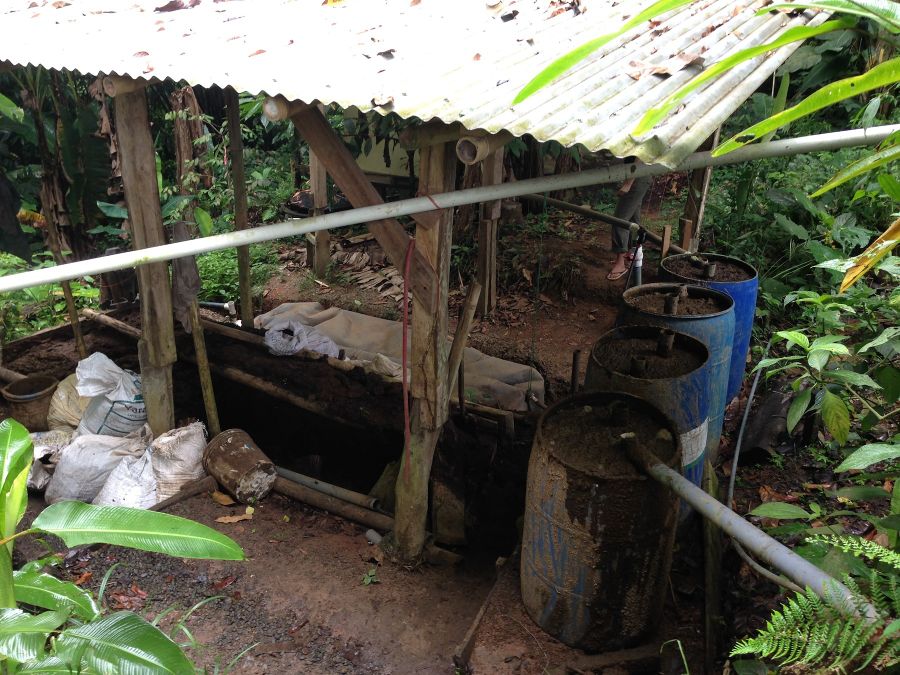
The manure biodigester at Rancho Mastatal converts animal waste into fertilizer and cooking fuel. It also provides extra waste material to the nearby floating drum biodigester toilets if the biodigester toilet use is not frequent enough to keep the drum functioning.
Components
The table below describes the various components of the manure biodigester.
| Image | Description |
|---|---|
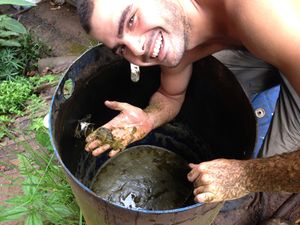 |
The first step of the process is to collect manure and add water. The manure is placed in drums above the biodigester at a 36:1 water to manure ratio. It then drains from these drums down to a series of settling tanks. |
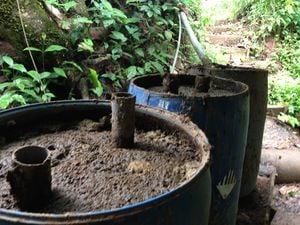 |
This image shows the settling tanks. The settling tanks let the solids rise to the top. The solids are collected and placed into a composting basin, while the liquids drain to the biodigester bag. If more material is needed in the nearby floating drum biodigester tank, then the liquids are diverted to that tank. |
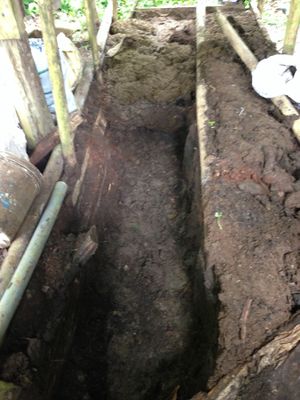 |
This image shows the basin for manure composting. This is where the solids from the settling tanks are stored before they are used as fertilizer. |
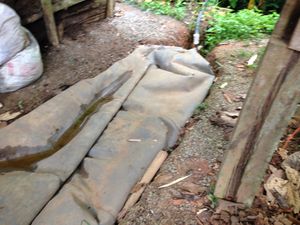 |
This image shows the biodigester bag. The liquids from the settling tanks are drained into this bag, where they are anaerobically digested into liquid fertilizer and produce methane. |
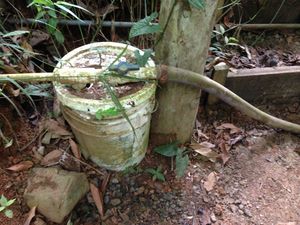 |
Methane is collected from the anaerobic digestion and piped to the kitchen. This is a bucket between the biodigester and the kitchen used to catch liquid particles that make it through the pipe. |
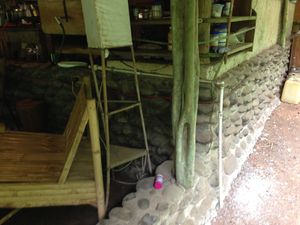 |
At the kitchen the methane is used for low heat cooking. The gas should also go through a scrub before it reaches the kitchen to eliminate toxic sulfur dioxide. |